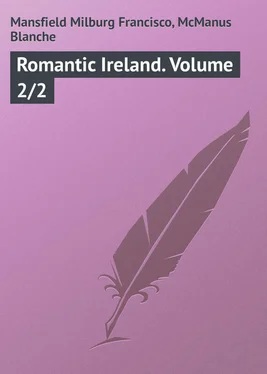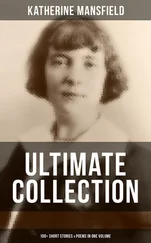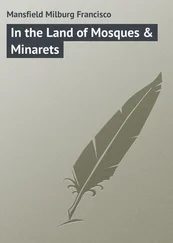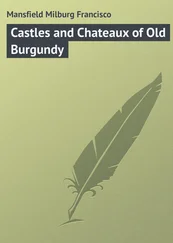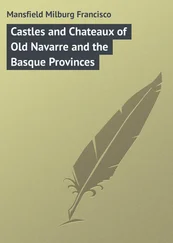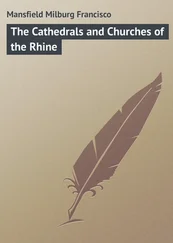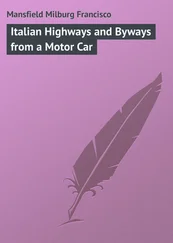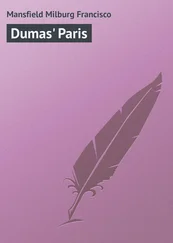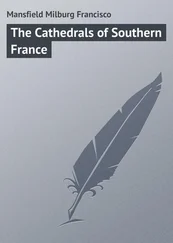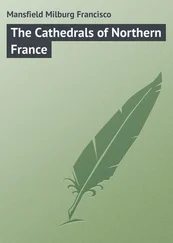Milburg Mansfield - Romantic Ireland. Volume 2/2
Здесь есть возможность читать онлайн «Milburg Mansfield - Romantic Ireland. Volume 2/2» — ознакомительный отрывок электронной книги совершенно бесплатно, а после прочтения отрывка купить полную версию. В некоторых случаях можно слушать аудио, скачать через торрент в формате fb2 и присутствует краткое содержание. ISBN: , Жанр: foreign_language, foreign_prose, Путешествия и география, на английском языке. Описание произведения, (предисловие) а так же отзывы посетителей доступны на портале библиотеки ЛибКат.
- Название:Romantic Ireland. Volume 2/2
- Автор:
- Жанр:
- Год:неизвестен
- ISBN:http://www.gutenberg.org/ebooks/46439
- Рейтинг книги:3 / 5. Голосов: 1
-
Избранное:Добавить в избранное
- Отзывы:
-
Ваша оценка:
- 60
- 1
- 2
- 3
- 4
- 5
Romantic Ireland. Volume 2/2: краткое содержание, описание и аннотация
Предлагаем к чтению аннотацию, описание, краткое содержание или предисловие (зависит от того, что написал сам автор книги «Romantic Ireland. Volume 2/2»). Если вы не нашли необходимую информацию о книге — напишите в комментариях, мы постараемся отыскать её.
Romantic Ireland. Volume 2/2 — читать онлайн ознакомительный отрывок
Ниже представлен текст книги, разбитый по страницам. Система сохранения места последней прочитанной страницы, позволяет с удобством читать онлайн бесплатно книгу «Romantic Ireland. Volume 2/2», без необходимости каждый раз заново искать на чём Вы остановились. Поставьте закладку, и сможете в любой момент перейти на страницу, на которой закончили чтение.
Интервал:
Закладка:
M.F and B. McM. Mansfield
Romantic Ireland; volume 2/2
CHAPTER I
QUEENSTOWN, CORK, AND BLARNEY
QUEENSTOWN has been called a mere appendage to its harbour, and, truly, it is a case of the tail wagging the dog, though the residents of Cork will tell you it is Cork Harbour, anyway, and Queenstown is nothing but a town that was made by the American War of Independence, and by the emigration rush that, during the past sixty years, has deprived Ireland of more than half her population.
Be this as it may, the harbour dwarfs everything else about the town. Above the enormous expanse of sheltered water, the little town piles itself up on the overhanging cliffs, pink houses, yellow houses, white houses, like a veritable piece of Italy. It is always warm here, or almost always. In the winter time, the temperature is seldom severe, and, in the summer, it is one of the finest yachting centres in the United Kingdom.
The “Beach” of Queenstown is truly Irish, since it is not a beach at all, but a fenced street full of shops, occupying the place where a narrow strand once ran.
Time was when Galway was a rival to Queenstown for the honour of being the link which was, by the emigrant chain, to bind the Old World to the New; but now the honour is Queenstown’s alone.
If tears, – the bitterest ever shed on earth, the hopeless tears of lonely aged parents parting from their cherished offspring; of man’s love leaving woman’s love thousands of miles behind across the seas; of friend clasping the hand of friend perhaps for the last time; of brothers and sisters parting from brothers and sisters, and all from the land that the Irishman loves as he loves his own life, – if such tears as these could quench the myriad of fairy lights that sparkle on the great harbour at dusk.
Queenstown would doubtless be the darkest city in all the world.
Queenstown is drenched in tears; the air still quivers inaudibly with the wailings that have filled it through day after day of half a century or more of bitter partings. Thousands have left Ireland every year from these quays, “the torn artery through which the country’s best blood drains away year by year.” To see an emigrant-ship cast loose from the quay and steam out of the harbour is a sight, once witnessed, that will never be forgotten; that will haunt one’s very dreams in years to come.
Until 1849 Cove was the name of the city, but during a visit of Queen Victoria here at that time, her first visit to Irish soil, the name was changed, in her honour, to that which it now bears.
Cork Harbour, to most travellers, is little more than a memory; but, in reality, it is one of those beautiful landlocked waterways which, for sheer beauty and grandeur, is, in company with Bantry Bay and Dingle Bay, which are less known, only comparable to the fiords of Norway. They have not the majesty or expansiveness of many of the latter; but they have most of their attributes more subtly expressed. Indeed, Cork Harbour and the river Lee, whose waters are in part enfolded by “the third city of Ireland,” Cork (Corcaig, “a marshy place”), are unapproachable in all the world for a certain subtle charm which is perhaps inexpressible in words.
As the Lee divides and encircles the city, it well illustrates Spenser’s lines:
“The spreading Lee that like an Island Fayre,
Encloseth Cork with his divided flood.”
Even the present-day aspect of Cork Harbour and the estuary of the river Lee from the heights of Queenstown is one of the fairest blendings of sea and shore anywhere to be seen.
Spike Island, with its convict establishment; Haulbowline, with its naval establishment; Rocky Island, with its powder magazine; Crosshaven Ring; and Rostellan Castle at once attract notice; and the eye roams with pleasure over a charming scene, enlivened with shipping of all kinds and from all ports, from the humble lugger to the steam-collier, and, finally, the ocean leviathans, which, in our strenuous times, have become known as “record-breakers.”
Into Cork Harbour Sir Francis Drake retreated when hotly pursued by the Spanish fleet. He was so effectually hidden in Carrigaline River, above the village of Crosshaven, that the Spaniards spent several days in fruitless search for him, and the spot is still known as Drake’s Pool. About four miles away is the fort-defended entrance to this spacious harbour. Old Ocean seems in some freakish humour to have struck his broad palm against the barrier-strand, pushed his watery fingers into the soil, and clutched at the rocks with his foam-white nails.
From its charming situation and equability of climate, Queenstown is one of the best places in Ireland to encounter to their fulness the charms of Ireland’s lovely daughters. This fact has been somewhat unduly enlarged upon in the past, it is true, but theirs is a rare and gracious beauty, and it is a general trait, so that there is a good excuse for introducing the subject once again. Some are here with such a rosy gladness; such an eglantine beauty-bloom; such dark hair and flashing eyes, soul-stirring and beaming with goodness; such a graceful mien and frankness of manner, blended with a quiet reserve; and, altogether, such a kindly air about them as to fully merit any eulogy which has been bestowed upon Irish women. One is not surprised at their being addressed by such mellifluous epithets as “ Cushla machree, asthore, mavourneen! ” These are endearments which certainly sound appropriate to all, whatever be the subtle shade of distinction.
Entrance to Cork via the river Lee gives prominence, first of all, to Shandon’s square church tower, of whose bells sang Father Prout:
“The bells of Shandon, that sound so grand on
The pleasant waters of the River Lee.”
Shandon Church is, for itself, decidedly worth seeing, though by no stretch of the imagination could it be called a beautiful structure. Up a long hill and up two flights of stone steps, one climbs to the quiet little old gray church, built in 1720, with its spiring tower and sounding peal of eighteenth-century bells. Seventeen hundred and fifty is the date cast on each of the eight.
St. Anne Shandon, or Sean-dun, signifying “the old fort,” is situated on Shandon Hill, and is really a suburb of Cork. Its fame, in the minds of most, reverts to Father Prout’s world-famous lyric, “The Bells of Shandon.” If “in the mood,” the listener will experience much the same emotions as are set forth in those pleasing stanzas. If not, as with most other things which have been similarly eulogized, the traveller will condemn it as mere hollow sentiment and “bosh.” But the latter will, likely enough, not prove to be the case.
The church was erected on the site of the old Church of Our Lady, or St. Mary Shandon, a very ancient edifice, destroyed at the burning of the suburbs at the siege of Cork by Marlborough in 1690. In the decretal epistles of Pope Innocent III., it is mentioned as the Church of St. Mary in the Mountain. In 1536, the rector of St. Mary’s, one Dominick Tyrrey, was elevated to the see of Cork, of which he was the first Protestant bishop. The Rev. Francis Mahony (“Father Prout”), though he spent much of his life abroad, is buried in the churchyard in the family vault at the foot of the tower.
The tower, or steeple, which contains the celebrated bells, is of unique construction. It consists of a tower and lantern (170 feet high) of three stories each. Two sides of the steeple, west and south, are built of limestone, and two, north and east, of red stone.
The chime of bells itself does not take a high rank among campanologists, since it is not very excellent either in voice or power. Still, given certain conditions, one may well realize Mahony’s (Father Prout’s) sentiments:
Читать дальшеИнтервал:
Закладка:
Похожие книги на «Romantic Ireland. Volume 2/2»
Представляем Вашему вниманию похожие книги на «Romantic Ireland. Volume 2/2» списком для выбора. Мы отобрали схожую по названию и смыслу литературу в надежде предоставить читателям больше вариантов отыскать новые, интересные, ещё непрочитанные произведения.
Обсуждение, отзывы о книге «Romantic Ireland. Volume 2/2» и просто собственные мнения читателей. Оставьте ваши комментарии, напишите, что Вы думаете о произведении, его смысле или главных героях. Укажите что конкретно понравилось, а что нет, и почему Вы так считаете.
